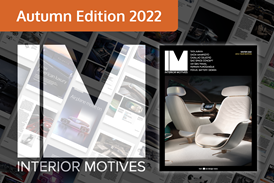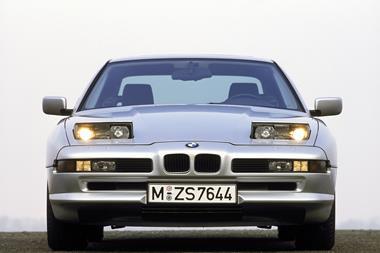Some experts say there is no such thing as annual ‘colour trends’ anymore or that they don’t apply to cars. It’s not like fashion, ‘this year it’s Rose Quartz, Pantone 13-1520’. What’s your view?
It depends on the region you live in. In Europe they’re highly influenced by colour. The size of the vehicle also plays a big part so that’s important to take note. Colour and trim trends are applied to automotive in different ways. They may not apply to a large area but more in the intricate details or accent pieces.
Can you give a recent example that might have launched in a region or vehicle size, where a specific colour was used in a certain way?
It’s difficult to pick a specific vehicle but we’re starting to see accent stitching and piping on more trims and accents in the North American market. The finish is different too, in some instances you have a combination of matt and gloss. If your seat cover is dull, the accent piece may be high gloss or have an additional texture, or metallic effect.
A selection of samples woven into wall art
The world is a big place but people say it’s getting smaller in terms of taste because of the internet and social media. Do you agree?
I certainly do. The digital world plays a huge part because we have access to so many more countries, cultures and influential inspiration without having the expense of travel or even leaving the office or home. Before the internet you had to physically drive or get on a plane to enjoy different experiences. For the automotive manufacturers, globalisation is also standardising colour and trim products, so no matter where you are in the world, they look, feel and function in the same way.
Your parent company Lear is well-established with carmakers but are you finding you’re being asked to start even earlier in the process?
Absolutely. We’re noticing that car manufacturer ‘turn times’ are getting shorter so starting earlier in the process is definitely a plus. Having Lear as a fully-integrated service supplier is also an advantage. Working with our seat engineers on the functional aspects we can make sure the products we develop satisfy form, function and feasibility. With Crafted by Lear we can bring that theme and quality in from concept through to the production phase, whether that’s through Guilford (textiles) or sister brand Eagle Ottawa (leather).
When even brand-new Chinese carmakers have large in-house design departments with a head of colour and trim and a few people working for them, where do you continue to fit into the picture?
We are eager to support in-house design studios. As textile experts we have a deep understanding of fibre, yarn preparation, process and textile constructions to drive aesthetics and performance. Our team of technology specialists have years of training in every aspect of fabric manufacturing.
Inspiration: A jacquard knit baseball boot
Can you give us an example of a trend that is very ‘now’ or ‘near’?
Natural fibres and recycled yarns are becoming a big trend in textiles. The next generation are looking for sustainability. Understanding what that means will be important. There are different levels of sustainability that can be evaluated. It could be in the raw material, or the manufacturing process. Or in the natural fibres you integrate into the products themselves and at the end of the loop, the recycling of the different interior parts. Not only is the use of natural materials a trend but also muted colours inspired by our natural surroundings and urban environments. In the automotive industry we will continue to see various shades of sophisticated greys and taupes for natural luxury.
We’ve seen such concept trends for a while, but only on the BMW i3 and a little bit at Volvo in production. Are there any other trends?
Smart technology textiles, so the design is not only aesthetically interesting but also has a functional purpose. In areas where you would have an actual mechanism or button, those are starting to go away and it’s about how your textile can work for you. Looking towards the autonomous vehicle, we are no longer going to be driving vehicles. Vehicles driving themselves will become mainstream so you’ll certainly want your interiors to be more aesthetically pleasing and highly functional. I definitely see interiors getting slightly larger and more functional but perhaps with fewer interior parts.
Is there anything from other industries you’ve seen recently that you think could be applied to automotive colour and trim in the future?
Ambient lighting is often featured in automotive interiors, usually as a separate component. In the future, with innovative solutions, we will see technology integrated within textile structures similar to the trends in performance athletic wear.
You can get rid of buttons and other components underneath the fabric, but are there any other functions that materials could assist with, related to well-being perhaps?
Absolutely, car interiors have become more important for the well-being of people, especially as we continue to spend more time driving.
Guilford has developed a unique customised layered system called Texstyle Defense built to repel and release, protecting your product.
It also incorporates anti-microbial and anti-static qualities to provide consumers with well-being and peace of mind. With the increasing trend towards these finishes, it will no longer be an option but a standard.
In ten years what will an autonomous driving cabin look or feel like and what colour do you predict will be big?
I think the autonomous vehicle is going to attract all ages. As a parent myself, I know what it’s like to ferry kids around. But I could imagine the current trend for Uber going one step further in the future, with phone apps that offer cars specifically designed for different age ranges – and with an interior to match.
…a bit like a shiny pink stretch limo for a ‘hen do’ or a girls’ birthday party or a matt black one for a boys’ night out, without getting too gender-cliched?
Vehicles are going to get more specific. It will no longer be one size fits all. If you want to have a meeting you might call up an autonomous vehicle, perhaps a larger vehicle with four seats that all face a centre console. Either way, the colour and trim of the interior will cater to the needs of the consumer and their desires.
A microscopic view of a Guilford textile
Are there any aesthetic keys to Guilford compared to other rivals?
Guilford has strong textile design and development capabilities. We produce fabrics for a number of automotive interior applications, including seating and headliner fabric. Our technologies include warp, weft and circular knitting, as well as woven constructions to create innovative interior solutions. We offer a wide range of secondary embellishment technologies enabling unique design emphasis. With a global presence, Guilford can supply solutions around the world.
So where might you use weft and where would you use warp in terms of seat durability and aesthetic?
Warp and weft knitting have many unique advantages because of their structure and functional properties for stretch. Fabrics can be directionally structured. In weft knitting, the loops are formed horizontally across the width of the fabric, warp knitting is when the yarns zigzag vertically along the length of the fabric. Knitted products are typically used for extremely high performance applications such as bolsters.
…and another close-up of a knitted material
You are down the pub and people ask ‘So Nicola, what do you actually do? …and I’m thinking about buying some gold shoes. Is that a good idea?’ How would you make them interested in your career?
I love being part of an industry where your creative efforts make it into the everyday lives of people around the world. I have the opportunity to travel and research global concepts and colours from home furnishing to fashion. These are interpreted into creative designs and structures for knitted and woven textiles used in automotive interiors where colour also plays such a significant role. Everywhere we look we are surrounded by colour, they are a major part of our lives. Colours that create a positive emotional response will be the perfect inspiration if you’re selecting paint for an accent wall, your next vehicle interior – or a pair of gold shoes…

















